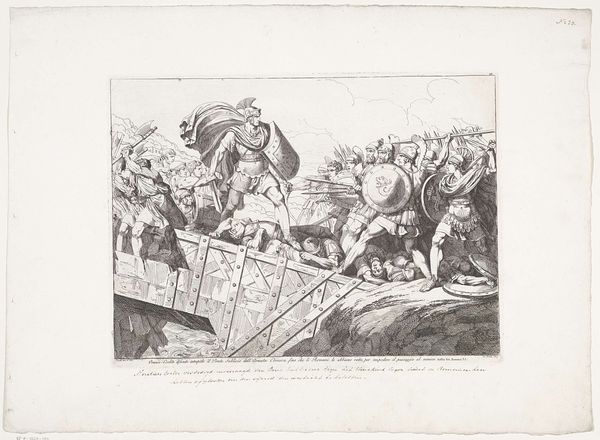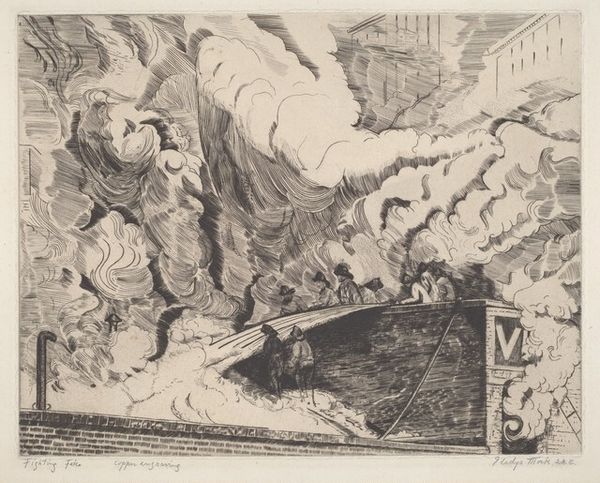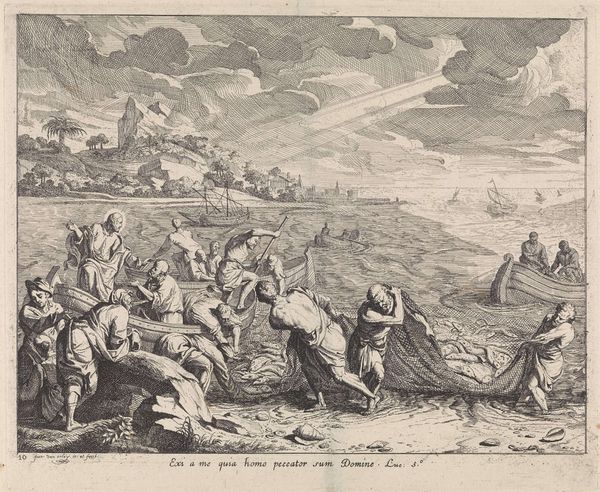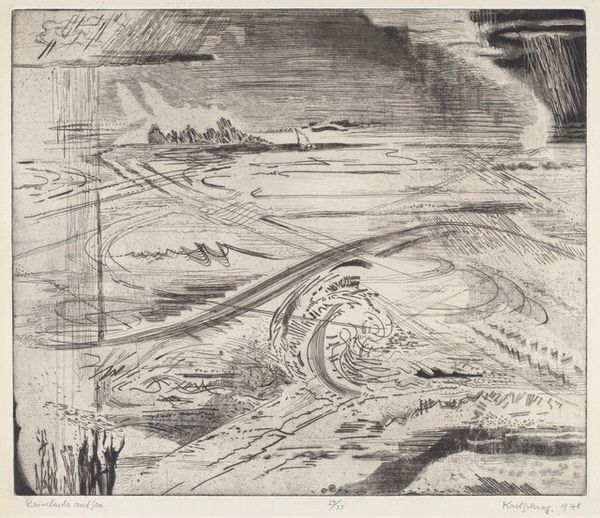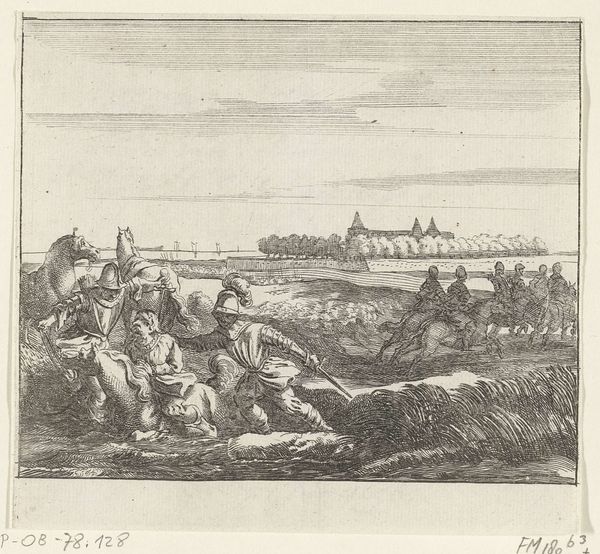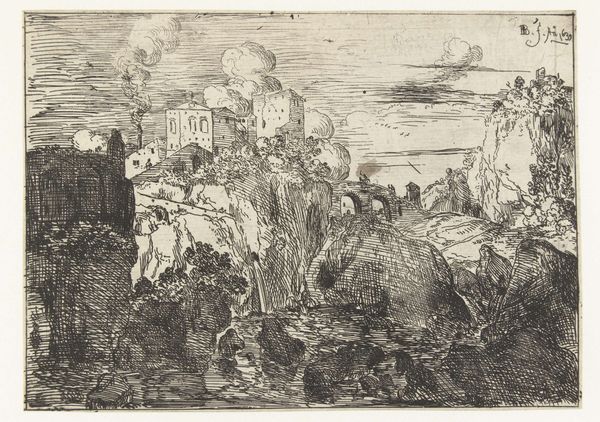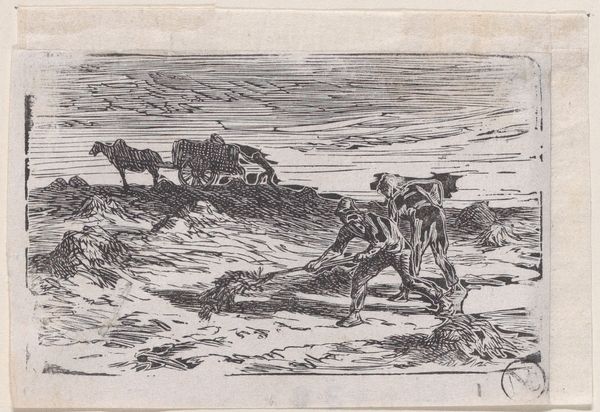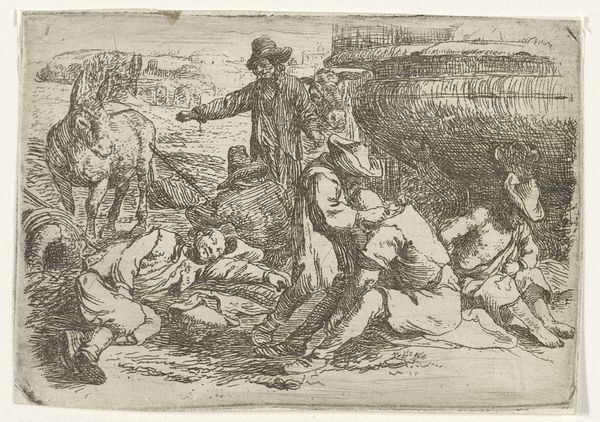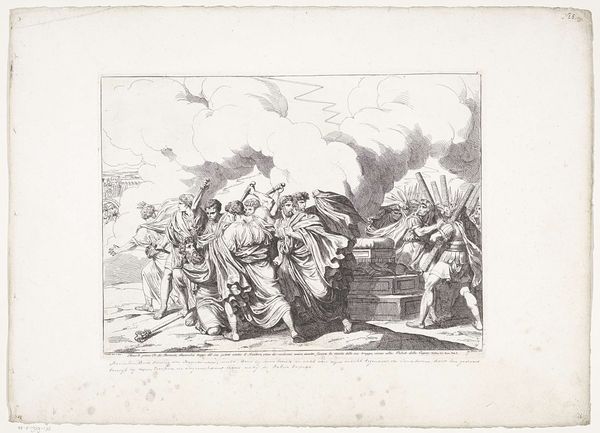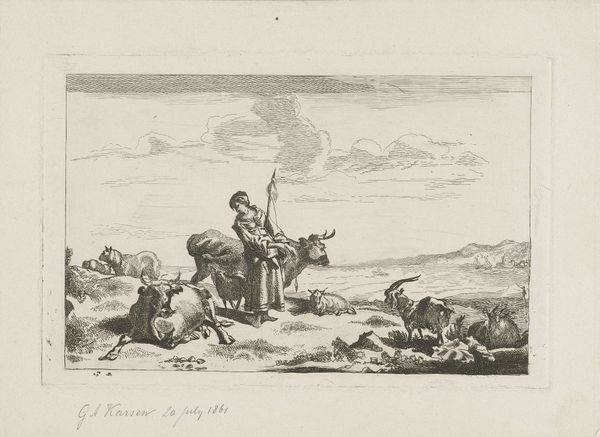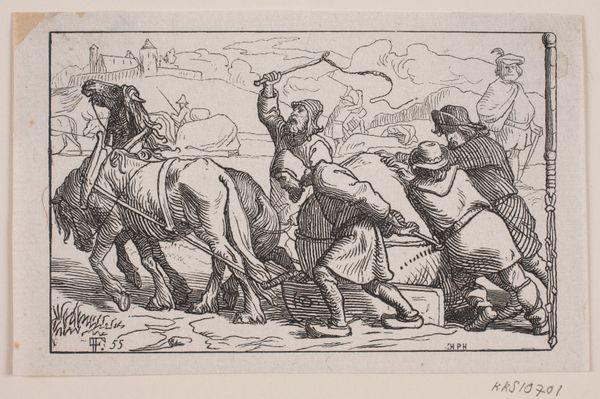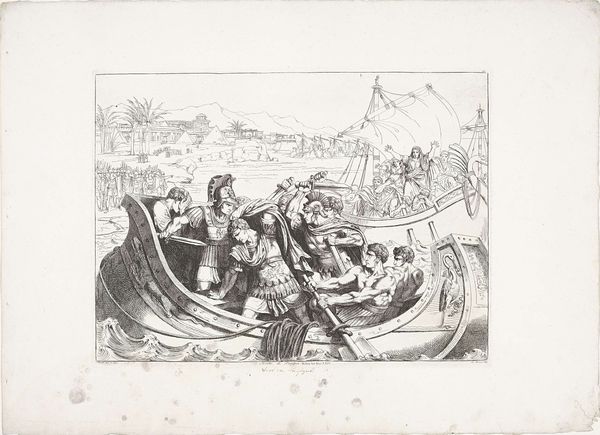
Xerxes at the Hellespont (Allegory on Sea Power), from "Bildermann," 13, Oct. 5, 1916 1916
0:00
0:00
Dimensions: 28 x 34.8 cm (11 x 13 11/16 in.)
Copyright: CC0 1.0
Editor: This is Max Slevogt's "Xerxes at the Hellespont" from 1916, a print. It's quite chaotic and dark, with figures struggling in the water. What do you see in this piece beyond the literal depiction of the historical event? Curator: Knowing it was created during World War I, we can interpret this less as historical illustration and more as a commentary on power and hubris. Xerxes’s attempt to conquer the sea mirrors Germany's own imperial ambitions and the devastating consequences of war, specifically using the context of the trauma of war. Editor: So, the drowning figures represent not just Xerxes's failed attempt, but also the human cost of war in general? Curator: Precisely. The print critiques the blindness of power, the futility of conquest. Slevogt may ask us to reflect on the human impact of decisions made in pursuit of military dominance. Editor: That context really shifts my understanding of the image. Curator: Art often serves as a mirror reflecting the anxieties and power dynamics of its time. Looking at the moment it was created can shift our interpretation.
Comments
No comments
Be the first to comment and join the conversation on the ultimate creative platform.
